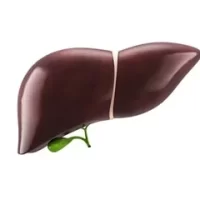Cannabis and psychedelics are two of the most well-known psychoactive drugs, or compounds that change psychological and physiological function. 1 These medicines can affect daily living in both negative and positive ways when utilized.
For instance, when taken appropriately, cannabis, sometimes referred to as marijuana, may be utilized as a treatment alternative for a number of neurological conditions like Parkinson’s, Alzheimer’s, and even brain cancer.
Contrarily, cannabis and other psychoactive substances can be taken recreationally and have been associated to issues with mood, cognition, and other symptoms.Two of the most well-known psychoactive substances—chemicals that alter psychological and physiological function—are cannabis and psychedelics. 1 When used, these medications can have both beneficial and negative effects on day-to-day life.
For instance, when used properly, cannabis, often known as marijuana, may be used as an alternative form of treatment for a variety of neurological disorders, including Parkinson’s, Alzheimer’s, and even brain cancer.
In contrast, marijuana and other psychoactive drugs can be used recreationally and have been linked to problems with mood, cognition, and other symptoms.
Cannabinoids like CBD, CBG, and THC are now commercially available for both recreational and medical usage as a result of the rising legalization of cannabis in a number of nations throughout the world. Cannabinoids are present in foods like confectionery and baked goods and can be consumed by inhaling marijuana smoke or consuming edibles. 7 Oils that can be swallowed, like nutritional supplements, or used topically, like lotions, are among the goods that include CBD and CBG. 8 To keep up with the rapidly evolving marijuana market, public health measures must now be more varied as a result of this multiplicity.
Limitations of traditional analytical techniques when studying cannabis include long experiments, lack of specificity, and complex data analysis. Yet, these challenges can be resolved with mass spectrometry techniques. Benedetta Garosi, a doctoral researcher and graduate research assistant at the University at Albany, SUNY, New York, will be hosting a talk on this issue; “High-end Sweets – Application of Ambient Mass Spectrometry for the Forensic Analysis of Cannabinoid-infused Complex Matrices.”
This study used direct analysis in real-time – high-resolution mass spectrometry (DART-HRMS) – to rapidly analyze the three different cannabinoids in edibles – CBD, CBG, and THC. Using this technique, Garosi and her team were able to accurately and precisely distinguish between the cannabinoids in edibles. As a result, DART-HRMS holds great promise for use in forensic cases and in helping medical professionals make informed health decisions.












